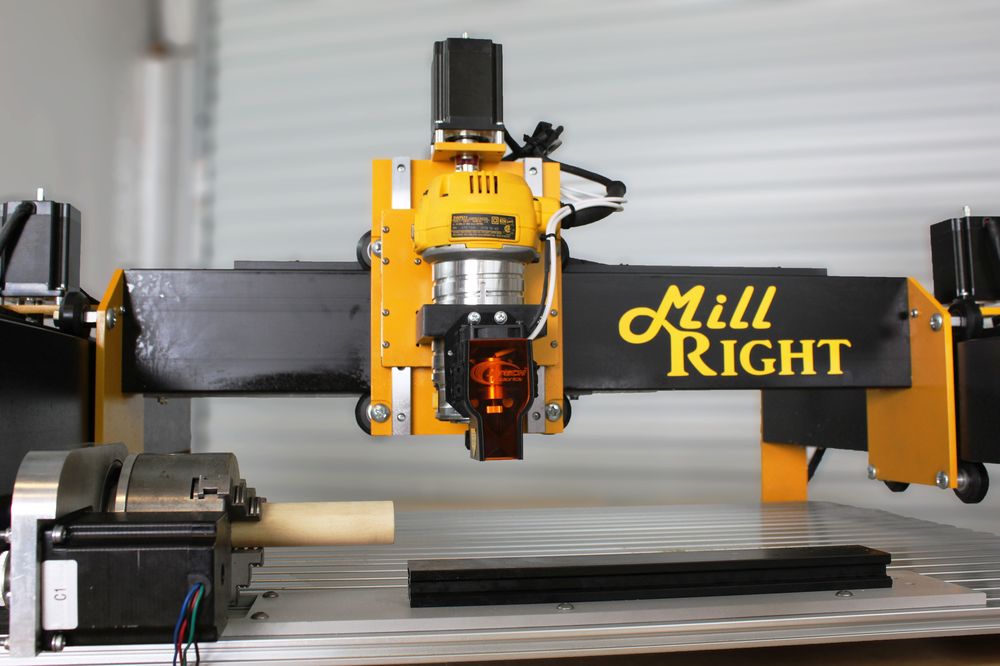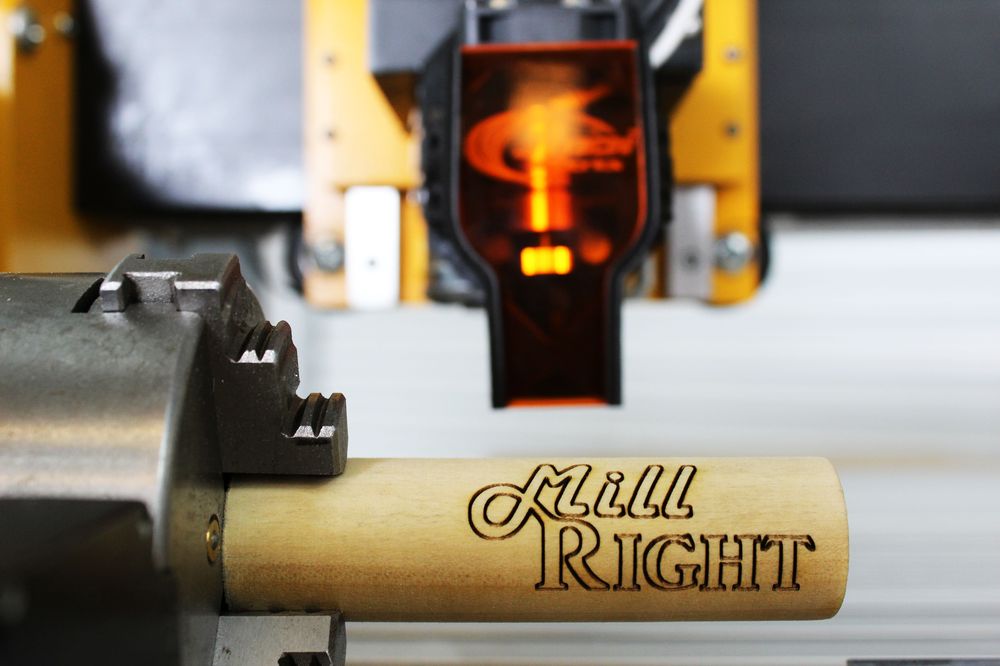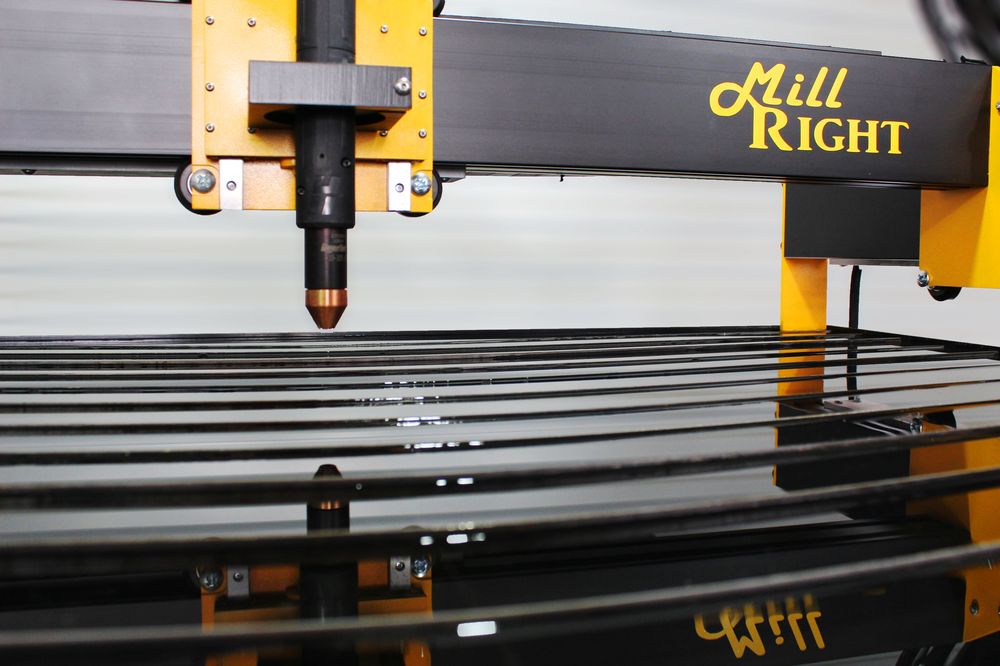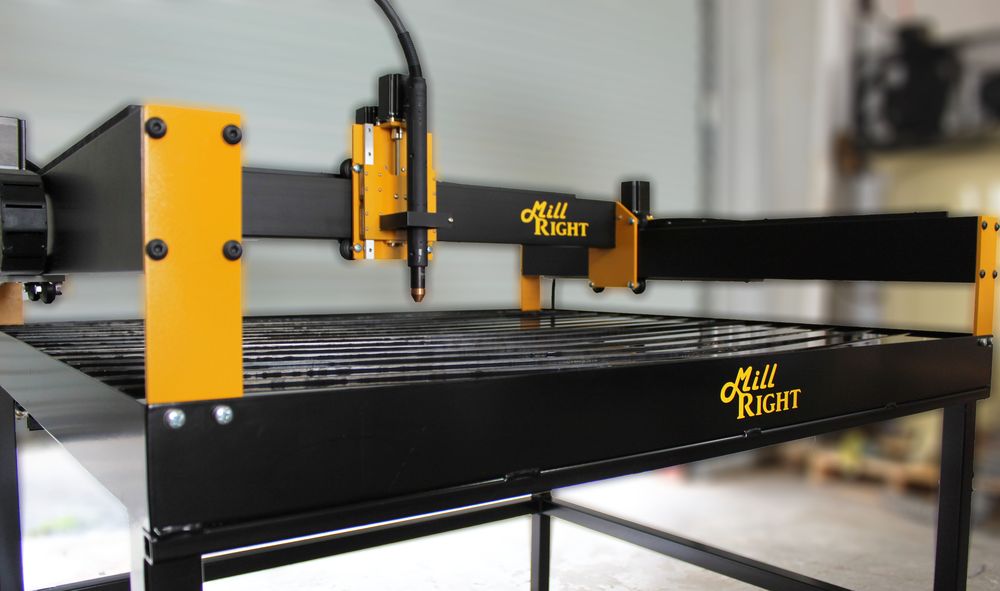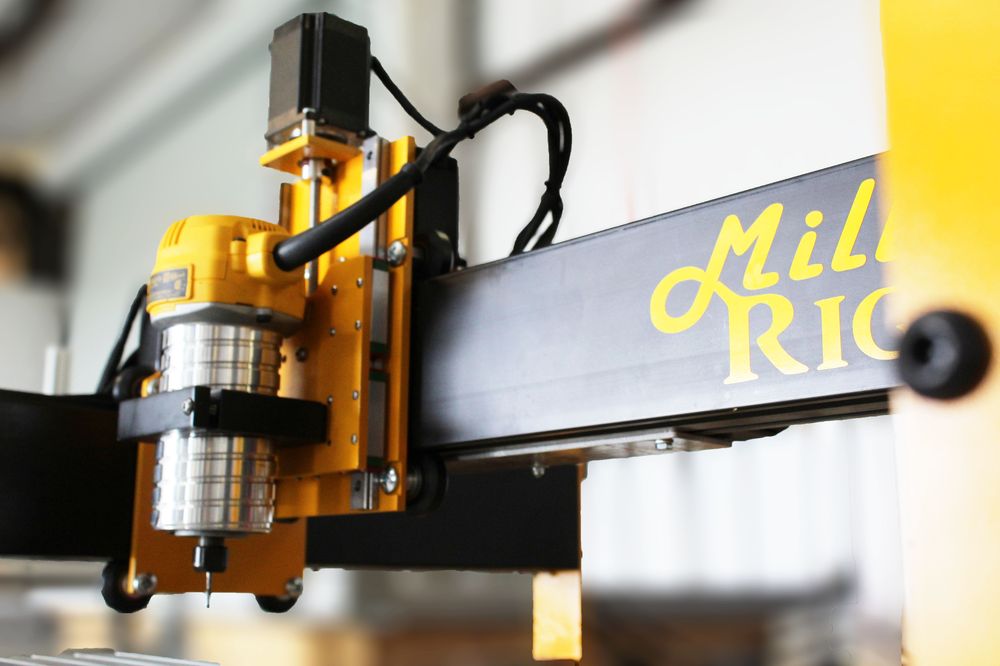I sat down with Derek Roberts, the man behind the MillRight CNC company. Derek is an entrepreneur, tinkerer, designer, visionary and guy with a cool southern accent. He goes over everything, from how he got started, to MillRight’s first product, starting a business, running a business, manufacturing challenges and, oh yes, their new desktop CNC product, the Mega V Router
Dan Slaski:What does MillRight make and what are you all about?
Derek Roberts: MillRight is a developer and manufacturer of CNC machines. Our mission is to deliver the best value in CNC.
DS:
DR: I’ve always been into tinkering with mechanical and electrical stuff. I ended up in a financial career and realized that I missed my calling. I had an invention idea for a product unrelated to CNC machines and started trying to figure out how I could develop it on a budget. I got into 3D printing with the RepRap community and started printing some of my prototypes. I quickly realized that I needed a CNC router. I shopped a long time for affordable CNC machines, but I couldn’t find one that I could afford! I figured I could take my years as a DIY’er and combine it with some 3D printing skills and ingenuity and make something that would do the job. I spent a while working in CAD and ended up using a hack saw, a hand drill, and a 3D printer to make my first CNC router. It worked! The newfound capability to cut signs and other nifty things for money spawned a side business that I hadn’t planned on. I eventually realized that if I could make a CNC machine that was affordable that was making me money, other people would be interested in one too. I realized that the “real” business would be in an affordable CNC machine.
I spent months designing what would eventually be the MillRight CNC M3. I was addicted to the project. I still had a demanding full-time job at the time, but I couldn’t sleep for wanting to work on it. I’d stay up almost all night refining and testing the M3. I’d go into work dead tired and do it all over again when I got off. I ended up with the final design and coordinated a very small production run after beating the bushes to find someone willing to work with me. I told myself I just hoped to sell 10 or so a year. I posted it for sale and a guy named Zack bought the first one in July of 2016

DS: Anyone that has worked with startups knows that new and difficult challenges are a daily and endless part of the job. What drives you? To be clear, I don’t mean belts, chains or lead screws.
DR: Coffee. Lots of Coffee. Seriously though, you are right that it’s tough starting a business and keeping it moving forward. There were times in the early days where I literally worked 30 or 35
DS: What software tools do you use to design your products?
DR: I used FreeCAD in the very early days. I have a lot of respect for FreeCAD, but we’ve been using Fusion 360 from Autodesk for quite a while. It makes it easy to share projects with team members or outside engineers and has all the tools we need and then some. I also like their policy of offering free licenses to hobbyist users. I think by offering pro-level CAD/CAM to qualifying hobbyists for free, Autodesk has really helped the maker movement grow.
DS: What is your philosophy around design, prototyping, and testing?
DR: I’m a pragmatist, and I think that comes through in our products.
When it comes to prototyping and testing, I think you have to fail fast and make the correction quickly. What I mean is that we like to put the prototype through the extreme use case as soon as possible. There’s no reason to tinker around and lose time with a prototype that only accomplishes 90% of what it is supposed to do. When it fails, and many will fail along the way, I like to be able to get the correction from the drawing board to ph
DS: In certain spheres of the 3D printing space, Chinese manufacturers have lowered prices to rock bottom. How does the landscape in the CNC milling space compare and what is your competitive strategy?
DR: The consumer level 3D printing is certainly more competitive than the CNC milling space. The Chinese have flooded the market with 3D printers that are produced and sold like commodities. I think there is somewhat of a natural barrier to this in the milling and routing space though. Those processes are just a little more involved than additive manufacturing, and I think customers are going to want and need a support infrastructure and community behind these products. I think the Chinese approach is incompatible with that.
MillRight’s strategy on the other hand is not to be the very cheapest on the market, but to offer the best value. Competing purely on price is a race to the bottom. Instead, we want to make the best overall value proposition to the customer. Customers want a good price to performance ratio, good support, and quick delivery, among other things. We’re seeking to strike that “best balance”. I think the successful execution of that goal starts with the design philosophy I talked about earlier, but it’s brought full circle by relating to the community and helping people succeed with your product.
DS: What are some of the most unusual things that people have built with your machines?
DR: One customer who is an engineer and pilot built an experimental aircraft with parts he cut on his Power Route. Another guy took his Carve King took to a construction site and engraved 20
DS: CNC routing seems to be the sweet spot between 3D printing and laser cutting. Compared to laser cutting, CNC milling doesn’t require special ventilation, can have much lower up front cost and can work with materials that lasering can’t cut through or would create dangerous gasses. Compared to 3D printing, CNC milling can create large parts, structural parts and only requires 2D sketching. That being said, I don’t see as much adoption in
DR: I’ve recognized that too. I think it is a mixture of a few things. The work flow for a CNC mill is a little more involved than with those other technologies. There is just a little more to preparing the tool paths and selecting the right machining strategies than using default settings on a 3D printing slicer. The noise and debris factor in too. I think it’s becoming more accepted though, and there are ways to reduce those with enclosures that we see a lot of our customers build.
The popularity of laser cutting and 3D printing will help grow the CNC milling industry though. For the reasons you identified, people are realizing the limitations of those technologies. They have their place and are great at what they do, but a CNC router is much more versatile. There are a ton more resources for learning the different concepts of machining than there used to be. I think that helps get people comfortable with approaching the technology and will grow this industry. I expect that CNC mills and routers will be as common as 3D printers in classrooms and makerspaces in the next few years.
DS: What are your thoughts on the good, fast, cheap conundrum?
DR: No one has ever made the perfect product because it would take an eternity of R&D and infinite investment to bring it to market. Everyone in product development and management wrestles with this conundrum. We do it by trying to be honest about what our capabilities and capacities are, what attributes of the product are essential, and what financial resources are needed to achieve those. This still leaves us bound by all these constraints, but having that plan and understanding
DS: What is your favorite soul food?
DR: Pickled pig’s feet! Just kidding. I’ve never been that adventurous. I do love some fried okra though. Fried stuff is a culinary theme in the South. Bad for your health. Good for your taste buds.
DS: What is your favorite soul food for your maker soul?
DR: Seeing customer made projects. I love to see how a person’s creativity manifests itself when the right tool is in his or her hand. It validates what we do here. We talk about it at work whenever we see a cool customer project. It’s exciting for us to think that in a small way we helped enable that project.
DS: What are you working on now?
DR: Our primary focus right now is the Mega V. It is our new machine that we have launched on Kickstarter. This is the first major release from us in a couple of years and we couldn’t be more excited. It is available as a CNC router or a CNC plasma cutter and boasts some specs that, I think, blow away anything else in the class. The machine can literally cut through material faster than most competing machines can

DS: What do you see for the future of
DR: I think you’ll see MillRight CNC enter some new competitive spaces over the next 5 or so years. We have our eye on some niches in the machine tool market that are dominated by one or two companies that appear to be asleep at the wheel. I think MillRight has brought a lot of value for consumers in the $500 to $5,000 machine market and there are a lot of ideas bouncing around here about the kinds of capabilities and industrial level features we could design into machines that retail for $10,000 to $25,000. I intend for us to stay true to our roots by always offering affordable machines that bring new people into the CNC community that could never justify a high dollar machine. There’s a market that is being under-served at that next level though, and in the years to
Learn more about MillRight CNC at millrightcnc.com, visit their store here, and join in their latest, FUNDED,


![MillRight: Derek Roberts and the ‘Mega V’ CNC Router and Plasma System [Interview]](https://www.solidsmack.com/wp-content/uploads/2019/09/millright-mega-v-desktop-cnc-12-sm.jpg)
